Unveiled in January at CES 2022, the new processors
Ryzen 6000 mobiles were presented from all angles by AMD engineers at the Ryzen Mobile Tech Day, organized last week. We take stock of the novelties offered by these new chips which will power an ever-increasing number of laptops
in 2022.
As usual, AMD organized a Ryzen Mobile Tech Day a few days ago to present to the press, and this time in detail, its new range of processors for ultrabooks and gaming laptops. Announced in Las Vegas last January, these next-generation mobile APUs are taking a new technological step by now relying on TSMC’s 6 nm engraving (against 7 nm until now).
New features that also extend to the very composition of these new chips, equipped both with redesigned cores (Zen 3+) on the CPU side, but also with a brand new iGPU based on the RDNA2 architecture: the same that powers the PS5 and Xbox Series X | S. We attended the detailed (and very technical) presentation of the firm of Lisa Su, here is what we remember.
Optimizations galore, AMD pampers its Ryzen offer
Two years after the introduction of the Ryzen 4000 chips, which had marked a turning point for AMD in terms of energy efficiency and laptop performance, the brand is refining its recipe to continue to grab market share from Intel. On the Ryzen 6000, the thing goes first through the use of the node N6 (6 nm) from TSMC, on which AMD relies to improve energy efficiency compared to its previous generation of mobile APUs.
The opportunity for AMD engineers to overhaul the Zen 3 architecture in depth. They explain that they now achieve much more subtle control of each thread and the frequencies applied to the processor, all at the scale of the millisecond. This increased control allows the Ryzen 6000 chips to pump even less power from the battery.
In 15 W, AMD thus promises between 8 and 12% more autonomy compared to the Ryzen 5000 chips launched last year. An estimate that rises to +17% in video playback depending on the brand. Manufacturers choosing to use a TDP of 28 W for their laptops will be able to count on an autonomy equivalent to that offered by the 15 W APUs of the old generation. Not bad, especially since the performances are also on the rise.
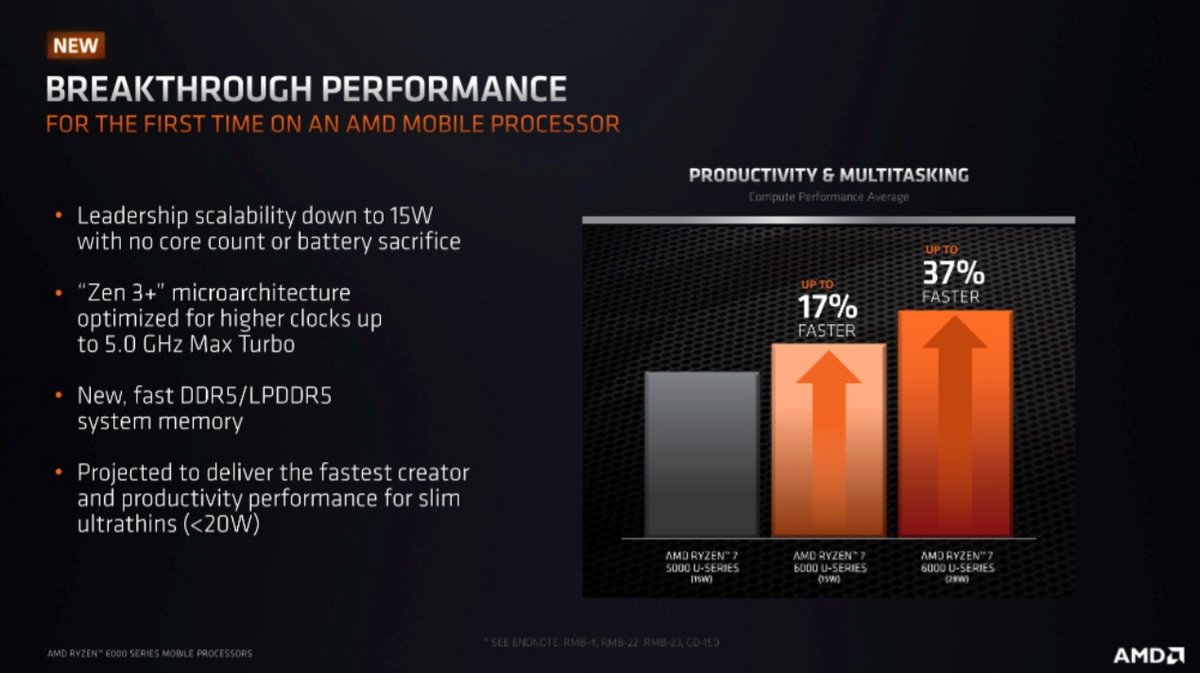
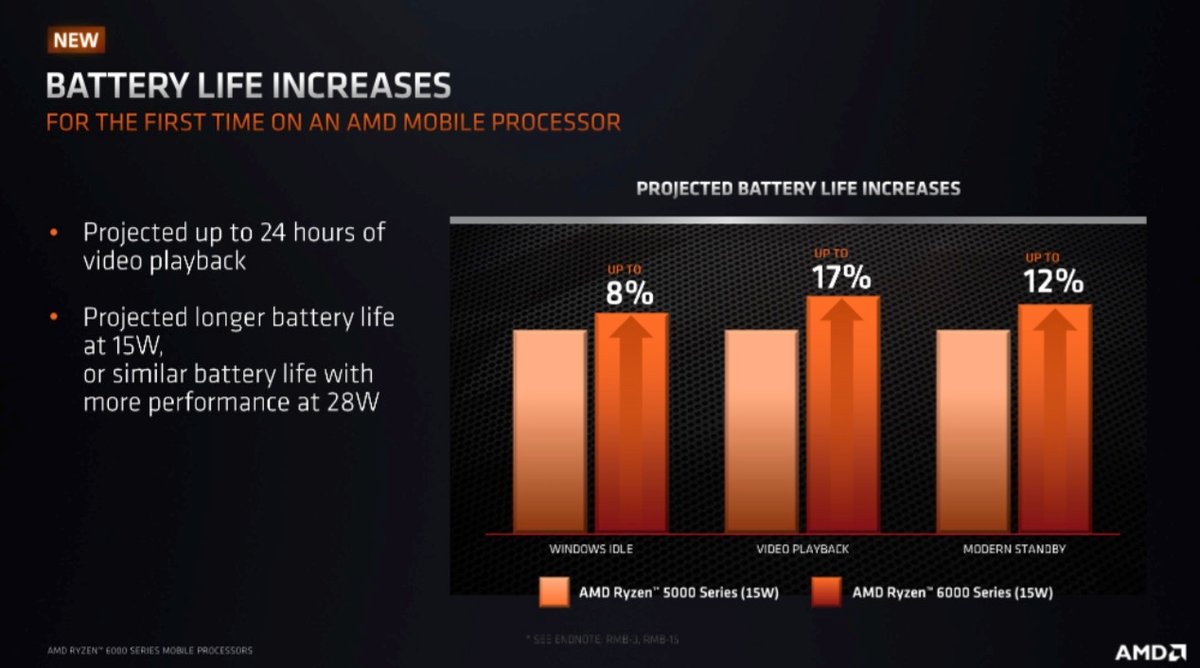
On this ground, and still in 15 W, the redesigns made by AMD allow it to announce an average increase of 1.17x in CPU computing power compared to the previous generation. An increase of 1.3x at 28 W promises the brand, which is always very happy to recall that its best Zen 3+ processors have 8 cores… compared to only 6 high-performance cores for the equivalent Alder Lake chips from Intel, in 28W.
On the other hand, it will be argued that this “disadvantage” is quite relative: Intel’s new processors remain very competitive. Because while AMD’s new generation of low-power CPUs outperforms Intel’s Tiger Lake-U APUs well (the Core i7-1185G7 is fairly well beaten in most scenarios), it should be more or less on par with the news. Intel chips.
Note also that AMD is taking advantage of its Ryzen 6000 APUs to upgrade to the latest standards. They support LPDDR5 / DDR5 RAM and the PCIe Gen5 standard. Another important new feature: support for the USB 4 standard with speeds up to 40 Gbps and support for 8K display, in particular. A good alternative to the Thunderbolt standard carried by Intel… and of which AMD chips are deprived.
RDNA2 iGPUs to comfortably play on notebooks?
In our opinion, the (long-awaited) arrival of the RDNA2 graphics architecture on the iGPU of the Ryzen 6000 mobiles is one of the most gratifying announcements for this new generation. This design is in fact taking over from the (aging) Vega architecture that AMD has used until now for the graphics part integrated into its APUs.
As it stands, this addition should allow the Ryzen 6000 chips to approach the graphics performance of some (small) NVIDIA GeForce GTX dedicated graphics cards.
In concrete terms, the Radeon 680M integrated into the Ryzen 7 6800U has 12 computing units clocked at 2.4 GHz. This iGPU also has a memory bandwidth 1.5x greater than in the past and L2 caches twice as large, among other things. Enough to allow him some pretty good things in play, including on some AAA, in 1080p. In 28 W, the iGPU from AMD thus crushes the iGPU Iris Xe of the Core i7-1185G7 by showing itself for example capable of animating Metro Exodus
, Assassin’s Creed Valhalla
or death stranding
at around 50 FPS at 1080p/low. Not bad for the graphics part of a processor that we will find especially on ultraportables.
Slightly less noticeably, NVIDIA’s GTX 1650 Max-Q is nearly matched on a whole slew of demanding games… and is even outperformed by AMD’s iGPU when FidelityFX / Radeon Super Resolution technologies are enabled. To play punctually on his office PC, AMD chips should therefore pull out of the game more than ever before.
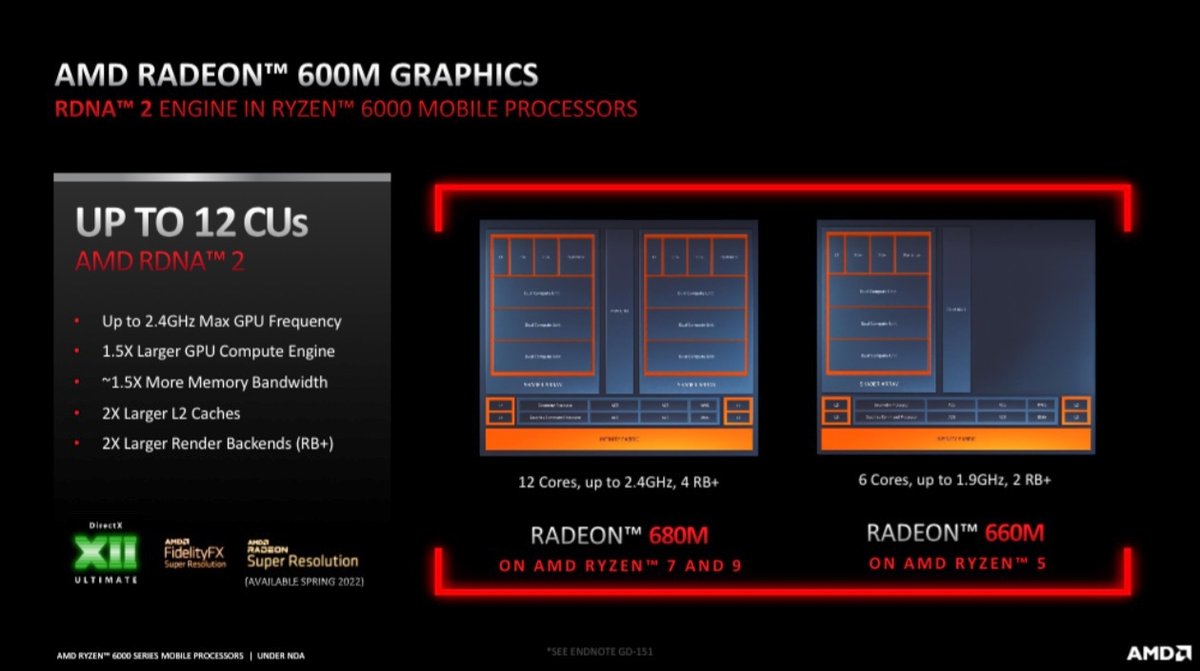
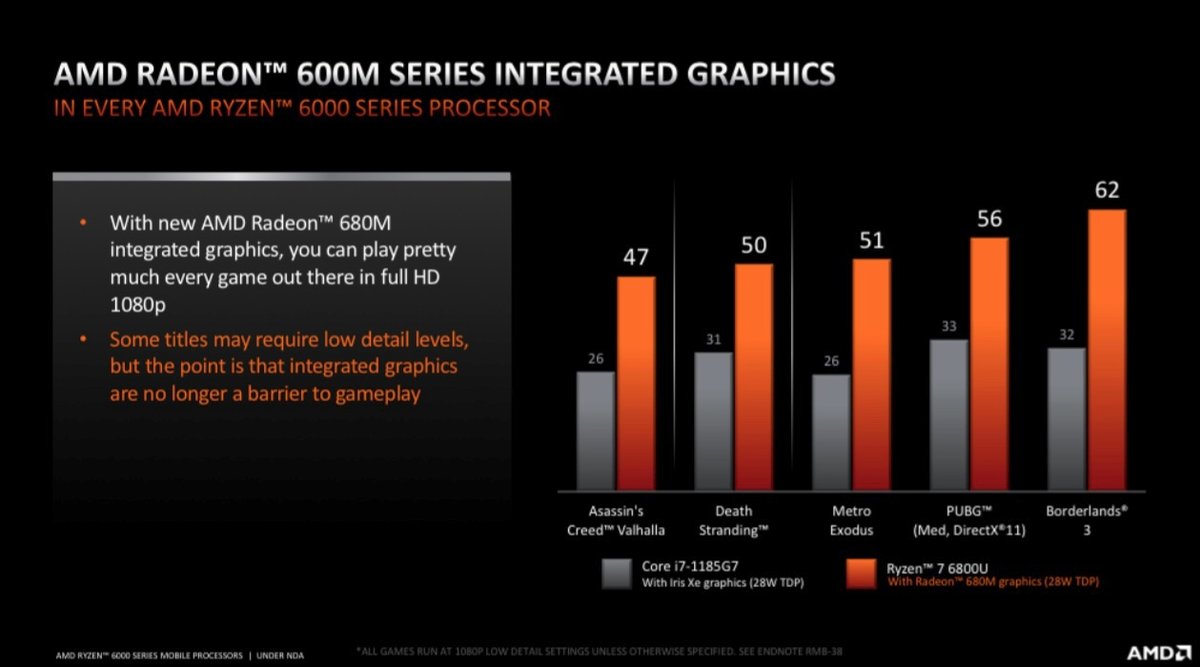
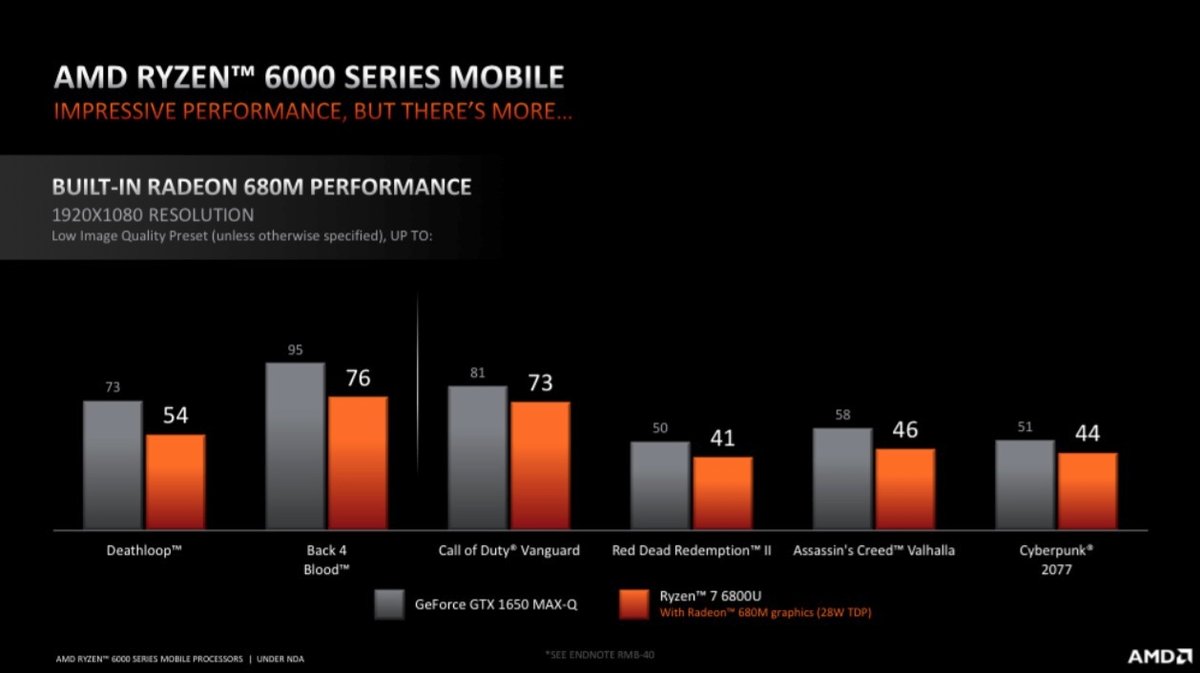
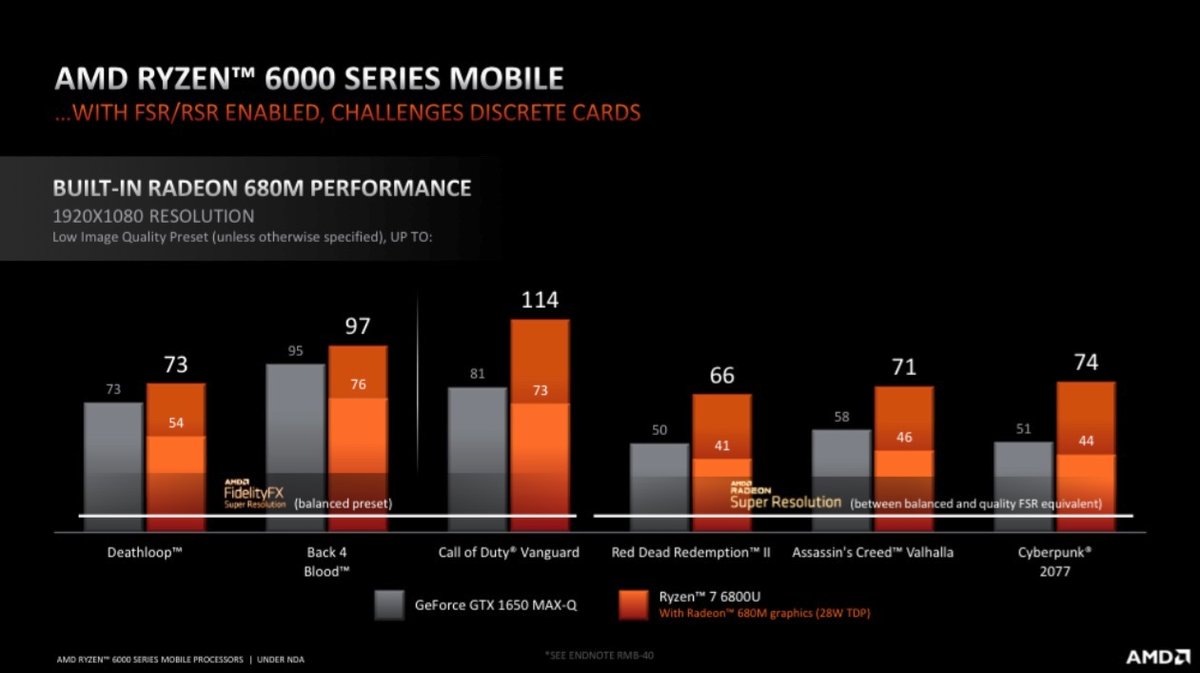
AMD wants to stay competitive in laptop gaming
That said, it is perhaps on the question of high-performance “H” processors, for gaming laptops and creative laptops, that the stakes are the most important for AMD. It must be said that this year, Intel is back in force with a whole slew of chips taking advantage of its new Alder Lake hybrid architecture, which can go up to more than 100 W of TDP on a laptop.
A path that AMD does not seem to want to take, however, at least not to this point. The argument of the firm being rather to try to be competitive, but with a more traditional architecture and a lower TDP. However, AMD mainly compares its new Ryzen 9 6900HX to the old Core i9-11980HK. Under these conditions, the red chip outclasses its blue rival without any particular difficulty in content creation and in 45 W (against 65 W opposite).
In game, AMD seems for the moment a little more discreet. In the documents he provided us, direct confrontations with the latest generation of Intel chips are not yet relevant (probably more a question of timing, Intel’s chips are still very recent). AMD, on the other hand, evokes much higher performance per Watt for its small Ryzen 9 6900HS (35 W) compared to the large Core i9-12900HK (110 W). Nothing very surprising here.
The general impression we have is this: with its “H” chips AMD may well be slightly behind on raw performance, but we would not be surprised if the brand does well on the question of efficiency. energy compared to Alder Lake processors. Of course, we will have to make sure of all this by testing the Ryzen 9 6980HX and Core i9-12900HK over the next few weeks. A confrontation that is likely to turn out to be epic.

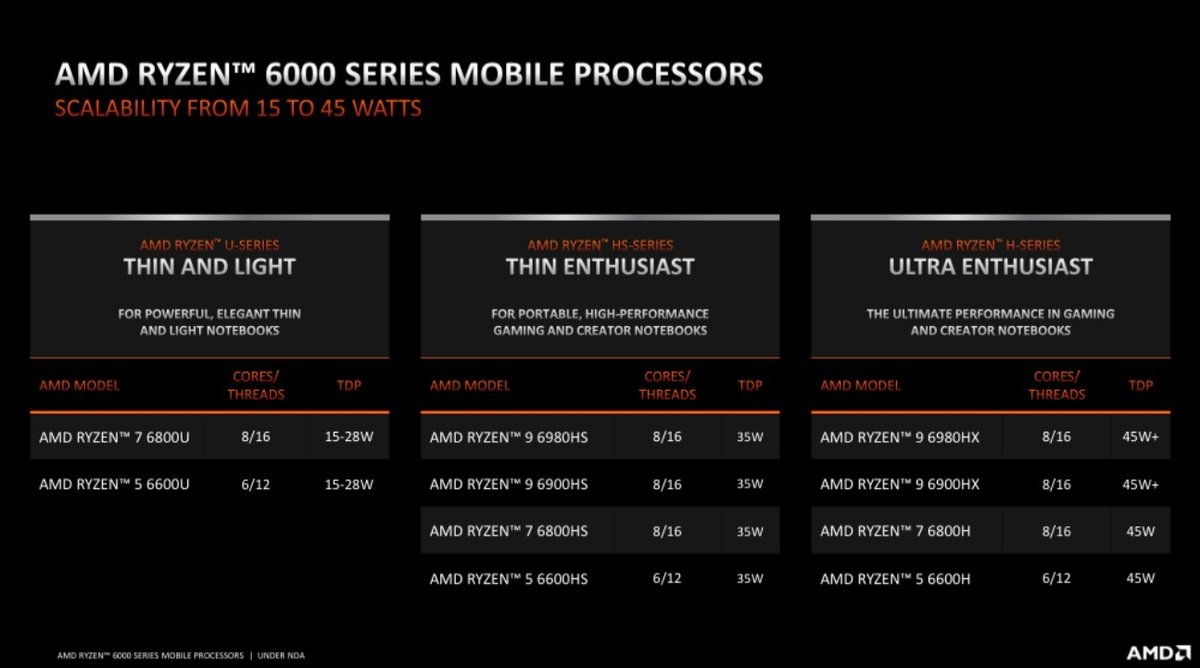
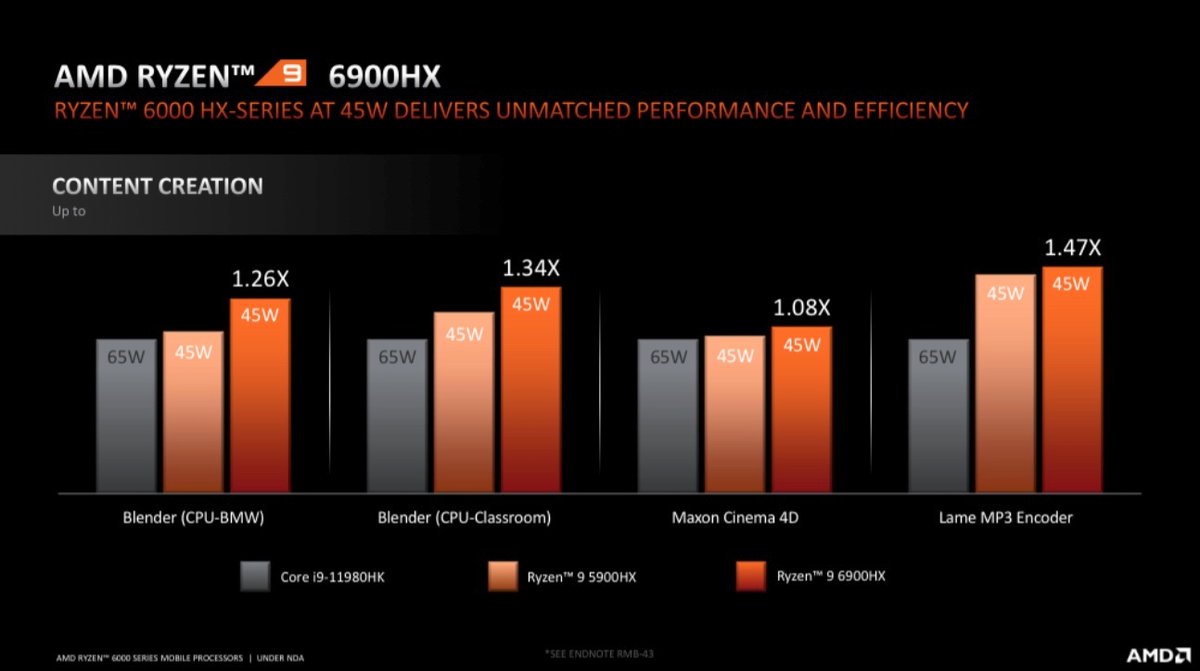
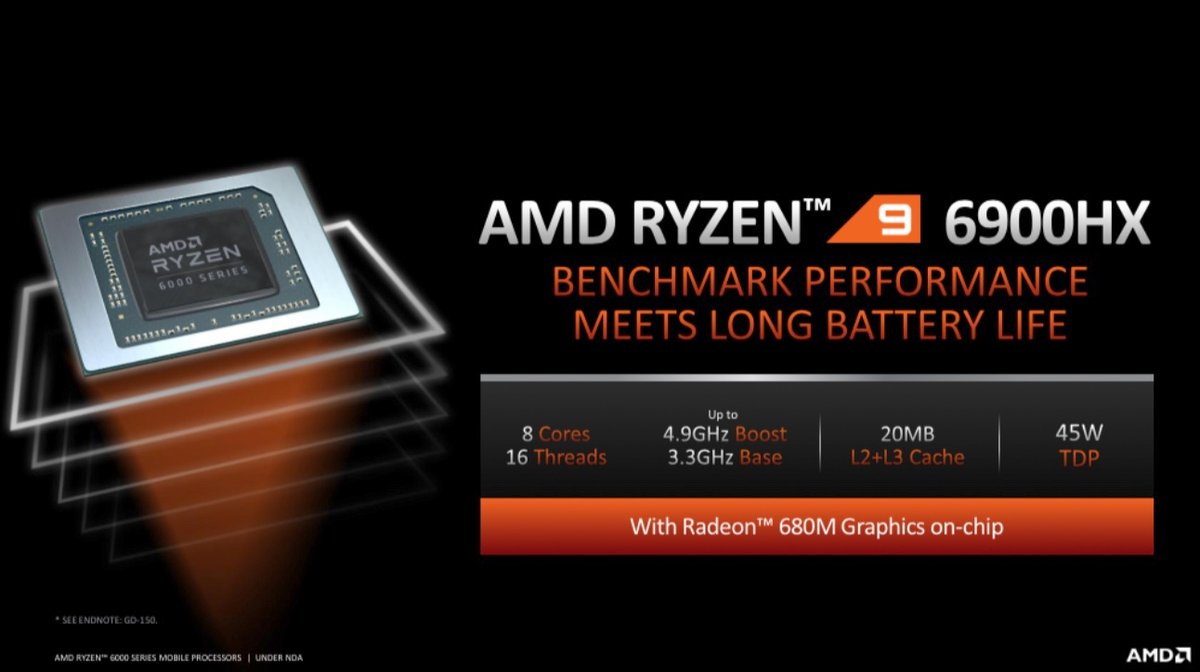
On the same subject :
For the first time, the market capitalization of AMD exceeds that of Intel
Sources: AMD Ryzen Mobile Tech Day briefing / AMD documentation
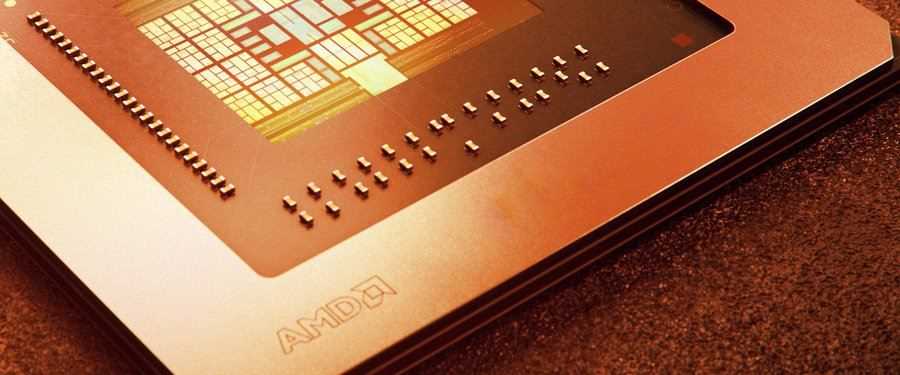
7